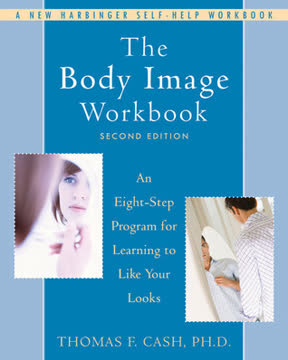Key Takeaways
1. Recognize the impact of negative body image on your life
Having a negative body image spawns other problems in living.
Self-esteem and relationships suffer. A poor body image often leads to low self-esteem, affecting how you value yourself overall. It can cause interpersonal anxiety, making you self-conscious in social situations and even impacting sexual relationships. Many people with negative body image avoid social events or intimacy due to shame about their appearance.
Mental and physical health decline. Body image dissatisfaction is closely linked to depression, with each reinforcing the other in a vicious cycle. It's also a key risk factor for eating disorders like anorexia and bulimia. Even without a clinical disorder, preoccupation with appearance can lead to unhealthy behaviors like chronic dieting, excessive exercise, or avoiding medical care.
Quality of life diminishes. A negative body image can limit your life experiences and opportunities. You may avoid activities you enjoy, miss out on career advancements, or struggle to form meaningful relationships - all because of appearance concerns. Recognizing these far-reaching impacts is the first step toward making positive changes.
2. Understand the historical influences shaping your body image
Body image forms gradually, beginning in childhood.
Cultural messages shape ideals. From an early age, we absorb societal standards of beauty from media, family, and peers. These often promote unrealistic or narrow ideals of attractiveness, especially thinness for women and muscularity for men. Recognizing how these external influences have shaped your body image beliefs is crucial for challenging them.
Interpersonal experiences leave lasting marks. Specific events like teasing, criticism, or trauma related to your appearance can profoundly impact body image. Even well-intentioned comments from family or friends can reinforce negative self-perceptions. Reflect on pivotal moments in your history that may have contributed to your current body image.
Individual factors play a role. Your unique personality traits, such as perfectionism or low self-esteem, can make you more vulnerable to body image concerns. Physical changes during puberty, weight fluctuations, or health issues may also trigger or exacerbate negative body image. Understanding these personal influences helps you address the root causes of your body image struggles.
3. Practice mindfulness to accept your body image experiences
Acceptance means seeing things as they really are and seeing them in the present moment.
Observe without judgment. Mindfulness involves paying attention to your thoughts, feelings, and bodily sensations in the present moment without trying to change them. When it comes to body image, this means noticing negative thoughts or emotions about your appearance without automatically believing them or reacting to them.
Break the cycle of distress. Often, we add layers of suffering to our body image concerns by judging ourselves for having those concerns in the first place. Mindful acceptance allows you to experience body image discomfort without amplifying it through self-criticism or avoidance.
Create space for change. By accepting your current body image experiences, you paradoxically open the door for positive change. Instead of being caught up in the struggle against negative thoughts and feelings, you can channel that energy into more constructive actions and attitudes toward your body.
4. Challenge appearance assumptions and cognitive distortions
Your affirmative answers to these questions indicate that your body image presents some difficulties for you.
Identify harmful beliefs. Many people hold deep-seated assumptions about the importance of appearance, such as "My worth depends on how I look" or "I should always look my best." Recognizing these beliefs is the first step to challenging them.
Spot thinking errors. Common cognitive distortions in body image include:
- All-or-nothing thinking (e.g., "I'm either perfect or I'm hideous")
- Magnification (e.g., fixating on a perceived flaw)
- Mind-reading (e.g., assuming others are judging your appearance)
- Emotional reasoning (e.g., "I feel ugly, so I must be ugly")
Develop a new inner voice. Replace critical self-talk with more balanced, compassionate thoughts. This doesn't mean forcing positivity, but rather cultivating a more realistic and kind perspective on your appearance and worth.
5. Face your body image avoidance and rituals
Self-protective actions are motivated more by preventing discomfort and emotional pain than by providing pleasure.
Identify avoidance behaviors. Many people with negative body image avoid situations that trigger appearance anxiety, such as:
- Wearing certain clothes
- Going to the beach or pool
- Looking in mirrors
- Being photographed
- Intimate relationships
Recognize appearance-preoccupied rituals. These compulsive behaviors aim to manage appearance anxiety but often perpetuate it:
- Excessive grooming or makeup application
- Frequent body checking or weighing
- Constant appearance comparisons
- Seeking reassurance about looks
Gradually face fears. Use exposure techniques to systematically confront avoided situations and reduce appearance anxiety over time. Similarly, work on reducing appearance-focused rituals by delaying or limiting them.
6. Cultivate positive body-self relations through affirmative actions
Affirmative Actions are intended to improve your relationship with your body by doing special things to foster positive body image thoughts and feelings.
Focus on body functionality. Appreciate what your body can do rather than just how it looks. Engage in physical activities that promote feelings of strength, flexibility, or skill mastery.
Enhance sensory experiences. Pay attention to pleasant bodily sensations like the warmth of sunlight on your skin or the taste of a favorite food. This helps foster a more positive connection with your body.
Practice flexible grooming. Find ways to enjoy enhancing your appearance without fixating on "fixing" perceived flaws. Experiment with styles that express your personality and make you feel good.
Express gratitude to your body. Regularly acknowledge the ways your body serves and supports you, from basic functions like breathing to more complex abilities like creating art or nurturing relationships.
7. Preserve your positive body image for life
One thing that never changes is the fact that things will always change.
Anticipate challenges. Recognize that body image improvements may face setbacks due to life changes, stress, or encountering "trigger" situations. Plan strategies for coping with these challenges in advance.
Address lingering concerns. Even after making progress, you may have specific body image issues that need ongoing attention. Continue to apply the skills you've learned to these areas.
Cultivate a growth mindset. View body image as a lifelong journey rather than a fixed destination. Embrace the idea that you can continue to develop a more positive relationship with your body throughout life.
Spread body acceptance. Share your insights and experiences with others to create a more body-positive culture. Challenge appearance-focused comments or attitudes when you encounter them in your social circles.
Last updated:
FAQ
1. What is "The Body Image Workbook" by Thomas F. Cash about?
- Comprehensive self-help program: The book offers an eight-step, evidence-based program designed to help readers understand, assess, and improve their body image.
- Focus on cognitive-behavioral methods: It integrates cognitive-behavioral therapy (CBT) techniques with mindfulness, acceptance, and expressive writing to address negative body image.
- Practical tools and exercises: Readers are guided through self-tests, worksheets, and reflective exercises to identify personal body image issues and track progress.
- Applicable to diverse readers: The workbook is intended for women and men, teens and adults, and people with a range of body image concerns, including those who "look different."
2. Why should I read "The Body Image Workbook" by Thomas F. Cash?
- Scientifically validated approach: The program is rooted in decades of psychological research and has been shown to be effective in clinical trials.
- Personalized self-discovery: The workbook helps readers uncover the unique origins and patterns of their body image struggles, making the process highly individualized.
- Action-oriented guidance: It provides step-by-step instructions, practical strategies, and real-life examples to facilitate meaningful change.
- Long-term benefits: The book not only addresses current body image issues but also teaches skills for maintaining positive body image throughout life.
3. What are the key takeaways from "The Body Image Workbook" by Thomas F. Cash?
- Body image is multifaceted: It encompasses perceptions, beliefs, thoughts, feelings, and behaviors related to physical appearance.
- Change is possible: Negative body image can be transformed through structured self-assessment, cognitive restructuring, and behavioral change.
- Mindfulness and acceptance matter: Integrating mindfulness and acceptance practices is crucial for breaking the cycle of self-criticism and avoidance.
- Sustainable improvement: Building a positive relationship with your body requires ongoing self-awareness, self-compassion, and proactive maintenance.
4. What is the eight-step program in "The Body Image Workbook" by Thomas F. Cash?
- Step 1: Self-Assessment: Discover your personal body image strengths and vulnerabilities through self-tests.
- Step 2: Historical Exploration: Understand the origins of your body image story using expressive writing and reflection on past influences.
- Step 3: Mindful Acceptance: Learn mindfulness and acceptance skills to observe and accept body image experiences without judgment.
- Steps 4-8: Address cognitive distortions, challenge negative self-talk, confront avoidance behaviors, eliminate appearance-focused rituals, and cultivate positive body care and self-affirmation.
5. How does "The Body Image Workbook" by Thomas F. Cash define body image and why does it matter?
- Personal relationship with your body: Body image is more than a mental picture; it’s your ongoing relationship with your body, including thoughts, feelings, and behaviors.
- Impact on self-esteem: A negative body image can significantly lower self-esteem and affect overall well-being.
- Influence on life quality: Poor body image can lead to social anxiety, avoidance, sexual difficulties, depression, and disordered eating.
- Potential for positive change: The workbook emphasizes that a positive, accepting body image is achievable and enhances life satisfaction.
6. What are the main causes of negative body image according to "The Body Image Workbook" by Thomas F. Cash?
- Cultural and media influences: Societal standards and media portrayals of beauty shape unrealistic expectations and self-criticism.
- Interpersonal experiences: Family, peers, and romantic partners can reinforce body dissatisfaction through teasing, criticism, or comparison.
- Physical changes and characteristics: Puberty, aging, trauma, or visible differences can trigger or worsen body image concerns.
- Personality traits: Low self-esteem, perfectionism, and insecure attachment styles increase vulnerability to negative body image.
7. What are the core concepts and methods used in "The Body Image Workbook" by Thomas F. Cash?
- Cognitive-behavioral therapy (CBT): The program uses CBT to identify and change negative thought patterns and behaviors related to body image.
- Mindfulness and acceptance: Readers are taught to observe their thoughts and feelings nonjudgmentally and accept their experiences as they are.
- Expressive writing: Writing exercises help process and integrate past experiences that shaped body image.
- Self-monitoring and corrective thinking: Tools like diaries and helpsheets encourage ongoing self-reflection and the development of healthier self-talk.
8. How does "The Body Image Workbook" by Thomas F. Cash help readers identify and change negative thinking patterns?
- Self-tests and diaries: Readers use structured self-assessments and diaries to track negative thoughts, emotions, and behaviors.
- Identification of cognitive distortions: The workbook details eight common mental mistakes (e.g., all-or-nothing thinking, unfair comparisons) that fuel body dissatisfaction.
- Corrective thinking strategies: Step-by-step guidance is provided for disputing and replacing distorted thoughts with more balanced, compassionate perspectives.
- Development of a "New Inner Voice": Readers are encouraged to cultivate a supportive, rational inner dialogue to counteract self-criticism.
9. What are "Evasive Actions" and "Appearance-Preoccupied Rituals" in "The Body Image Workbook" by Thomas F. Cash, and how are they addressed?
- Evasive Actions: These are avoidance behaviors (e.g., skipping social events, hiding body parts) used to escape body image discomfort.
- Appearance-Preoccupied Rituals: These are compulsive behaviors (e.g., mirror checking, excessive grooming) aimed at managing or "fixing" perceived flaws.
- Behavioral change techniques: The workbook teaches readers to gradually face avoided situations and reduce ritualistic behaviors through exposure, relaxation, and self-reward.
- Ladders of Success: Readers create stepwise plans to confront and overcome avoidance and rituals, building confidence and resilience.
10. How does "The Body Image Workbook" by Thomas F. Cash incorporate mindfulness and acceptance into body image improvement?
- Mindful self-monitoring: Readers learn to observe their thoughts, feelings, and behaviors without judgment, increasing self-awareness.
- Acceptance of discomfort: The workbook emphasizes accepting negative emotions as temporary and non-defining, rather than trying to suppress or avoid them.
- Practical exercises: Activities like mindful mirror reflections, body scans, and mindful engagement in daily routines foster present-moment awareness.
- Integration with CBT: Mindfulness and acceptance are combined with cognitive and behavioral strategies for a holistic approach to change.
11. What advice does "The Body Image Workbook" by Thomas F. Cash give for maintaining positive body image over time?
- Ongoing self-assessment: Regularly revisit self-tests and diaries to monitor progress and identify new challenges.
- Preventative maintenance: Anticipate and plan for high-risk situations or setbacks using skills learned in the workbook.
- Assertive communication: Learn to handle insensitive comments or social pressures with rational, assertive responses.
- Self-compassion and flexibility: Embrace imperfection, reward progress, and adapt strategies as life circumstances and body changes occur.
12. What are the best quotes from "The Body Image Workbook" by Thomas F. Cash and what do they mean?
- "To dislike your own body is to dislike yourself." This highlights the deep connection between body image and self-worth, emphasizing the importance of self-acceptance.
- "You feel what you think." This underscores the power of thoughts in shaping emotions, a core principle of cognitive-behavioral therapy.
- "Societal standards can’t harm you unless you buy into them." This quote encourages readers to question and resist harmful cultural messages about appearance.
- "Never give yourself a hard time for having a hard time." This promotes self-compassion and patience during the process of change.
- "Creating a positive relationship with your body is ultimately up to you." This empowers readers to take responsibility for their body image journey and embrace the possibility of change.
Review Summary
The Body Image Workbook receives mixed reviews. Many praise its comprehensive approach and practical exercises for improving body image. Clinicians find it a valuable resource for therapy. However, some criticize it for outdated language and potentially reinforcing problematic beliefs. Readers appreciate the step-by-step guide and worksheets but caution that parts may be triggering. The book is considered helpful overall, especially when used selectively. Some reviewers note its limitations in addressing intersectionality and systemic oppression, suggesting it may be most beneficial for thin, white individuals.
Similar Books
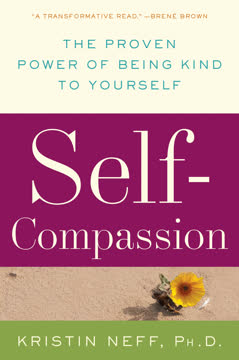
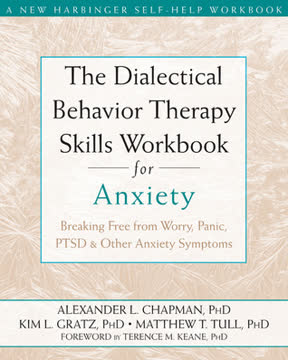
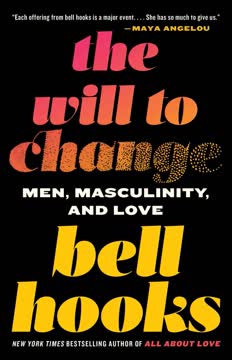

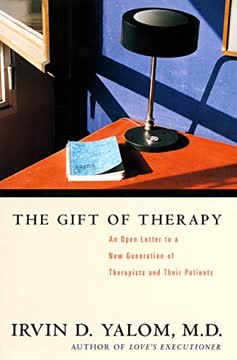
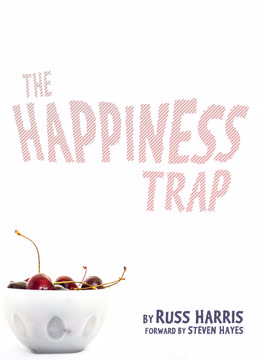
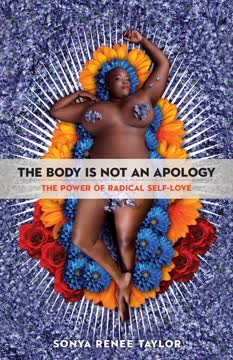


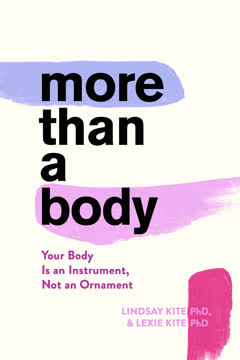
Download PDF
Download EPUB
.epub digital book format is ideal for reading ebooks on phones, tablets, and e-readers.
